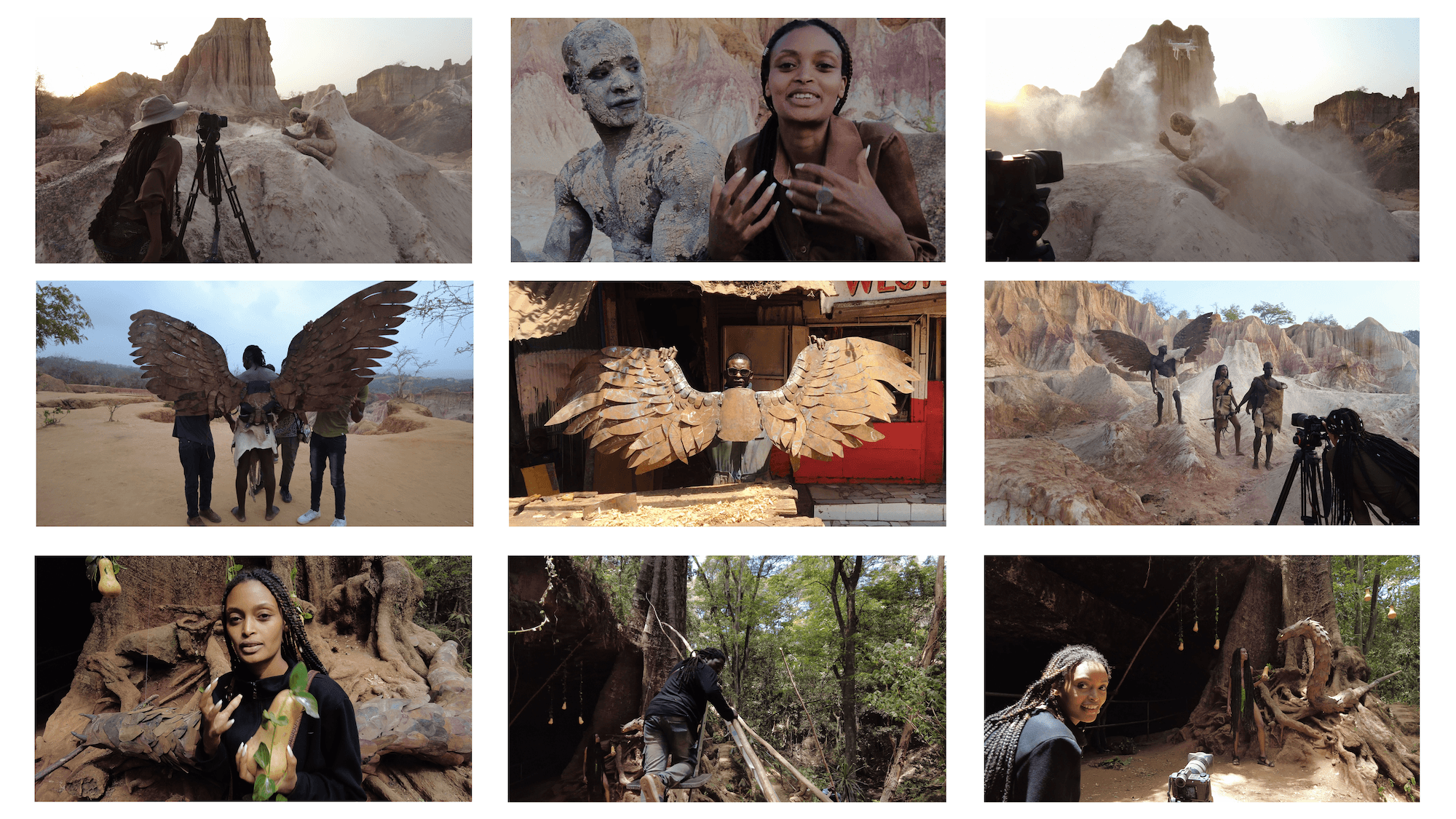The Story
Yatreda's "Adam and Hewan": A Contemporary Odyssey through Timeless Legends

Adam and Hewan አዳም እና ሔዋን
In the video-loop piece “The End of Innocence,” a man and woman engulfed by earth stare solemnly into the camera. A thin cloud of smoke washes over their partially naked bodies. This scene serves as the central imagery in what is a more complex and intriguing composition.
“‘The End of Innocence’ was designed to be one of those giant paintings you see in a church, where multiple panels come together to make a single story,” says artist Kiya Tadele, leader of Yatreda, an Ethiopian art collective dedicated to telling their country’s tales through NFTs. Here, they depict the story of Adam and Eve from Genesis, or “Adam and Hewan,” as known in Ethiopia, part of one of the most famous creation stories in the world. “Starting from the bottom, Adam is born from the dust like a little baby in the womb. In the middle circle, Adam and Hewan feel shame. At the top, they are kicked out of paradise.”
The series is deeply anchored in the Ethiopian artistic style of tizita, a term that evokes nostalgia. For Ethiopians, their history is a source of pride, a beacon of their enduring spirit of independence. Yatreda channels this sentiment, juxtaposing the past's grandeur with the present's complexities. Her art is a bridge, connecting the collective memories of Ethiopians, tales passed down orally, echoing in the hearts and minds of generations.
Yatreda
“The End of Innocence” is the first piece in a 13-part series that explores various aspects of the story of “Adam and Hewan.” In this process, Yatreda endeavours to move away from the Western imagery commonly associated with Adam and Eve, instead opting for African people and locations. “This vision of the Garden of Eden is different to what we’re used to seeing,” Kiya says. “As you can see, we have African animals, African trees, everything is in Africa.” After months of meticulously planning, Yatreda ventured to “Hell’s Kitchen,” an eroded sandstone canyon in Kenya (which itself becomes an integral part of Yatreda’s narrative) and, where they filmed for 20 days.
Kiya hoped that the two individuals she cast would offer a universal appeal. Hence, she chose Kenyan models Sylvia Owalla as Hewan and Gabu Fords as Adam. Kiya saw Hewan as having “purely natural beauty,” she says. “So, I chose Sylvia. She has a very timeless, soulful look, someone who makes the world remember their mother or maybe even their soulmate.” Meanwhile, Gabu is “physically handsome” while appearing “sweet and innocent,” she adds. “Like he never did a sin in his life. That is how I see Adam.”
Both Sylvia and Gabu are friends of the artists, which links back to the collaborative approach Yatreda strives for, with most of the group being family members, which also links back to their humble beginnings, creating pieces together on their front yard, attracting the attention of their neighbours.
The collective’s “Adam and Hewan” series is inspired by an Ethiopian artistic style known as ‘tizita,’ rooted in nostalgia and a longing for the past. “For Ethiopians, their history is a source of pride, a beacon of their enduring spirit of independence,” adds Kiya. “Yatreda channels this sentiment, juxtaposing the past's grandeur with the present's complexities.”
Most of what is seen in the series is created by hand, including the serpent and the angel’s wings, which are made of metal. The effects of Adam being formed from the soil is simply the model covered in mud and dust thrown onto him. “In a world of AI, we found our strong place working with our hands, in the smoke and dust,” says Kiya. “That is the Yatreda way.”